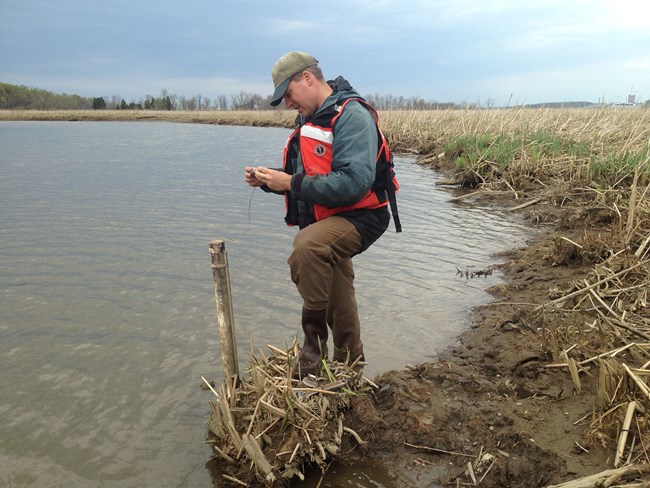
NPS
The National Capital Region Inventory & Monitoring Network monitors air quality, amphibians, birds, forest pests, vegetation, invasive plants, stream water, and stream fish and macroinvertebrates at George Washington Memorial Parkway. The results of that monitoring provide park managers with scientific information for decision-making.
George Washington Memorial Parkway is a scenic parkway that preserves the Potomac River Gorge and shoreline while serving as a memorial to the first President of the U.S. The Potomac Gorge featuring steep cliffs and rich eastern deciduous forests is a significant natural area home to many of rare species and natural communities.
The park’s main natural resource management concerns are invasive plants and diseases, overpopulation of deer, and encroaching urban development. Stormwater management is a big concern for stream ecosystems. Regional air quality and land use patterns can have strong effects on park resources.
What's Happening in George Washington Memorial Parkway
NCRN Monitoring at GWM Parkway by the Numbers
| What We Monitor | Sites at GWM Parkway* | Monitoring Frequency | Information We Collect |
|---|---|---|---|
| Amphibians | 69 known wetland pools | Annual sampling on a subset of known wetlands Wetland sites are monitored twice per sampling period |
|
| Birds – forest only | 20 (forest bird) | Forest plots are monitored twice a year |
|
| Forest vegetation | 20 (forest vegetation) | Approximately a quarter of plots each year on a four-year cycle |
|
| Stream biota – fish and macroinvertebrates | At streams listed below | Periodic sampling 2007-2014, 2019-2023 |
|
| Stream water quality | 4 (stream site) on Mine Run, Pimmit Run, Turkey Run, and Minnehaha Creek on Maryland side of Potomac River | Stream sites are monitored every other month |
|
| Marsh elevation | 12 on Dyke Marsh | Marsh elevation sites are monitored once a year |
|
Last updated: May 11, 2023
